Hundreds of cats and dogs killed in attacks on Ukrainian animal shelter
As many as 260 cats and 100 dogs perished in the attacks on the ‘Best Friends’ shelter near Kyiv, say bosses

Hundreds of cats and dogs have been killed in a series of attacks on an animal shelter southwest of Kyiv, The Independent has learned.
Managers at the ‘Best Friends’ animal shelter near Makariv in the Kyiv Oblast have spent weeks rebuilding their site after losing almost everything in what they say were Russian bombings.
Elena Artykhovych, a volunteer, said the first attack took place on 1 March, just under a week into the Russian invasion.
She tells The Independent: “It was an air raid, our manager heard a sharp sound of a plane... then she heard a terrible explosion.
“After she and her husband realised what had happened they immediately ran out of their trailer and saw a row of aviaries that were on fire. Our manager’s husband ran to open the cages to free our dogs.”
A post that day on the Facebook page of Best Friends read: “A bomb was dropped on the shelter!!!! The shelter is on fire! Need quick help!!!”
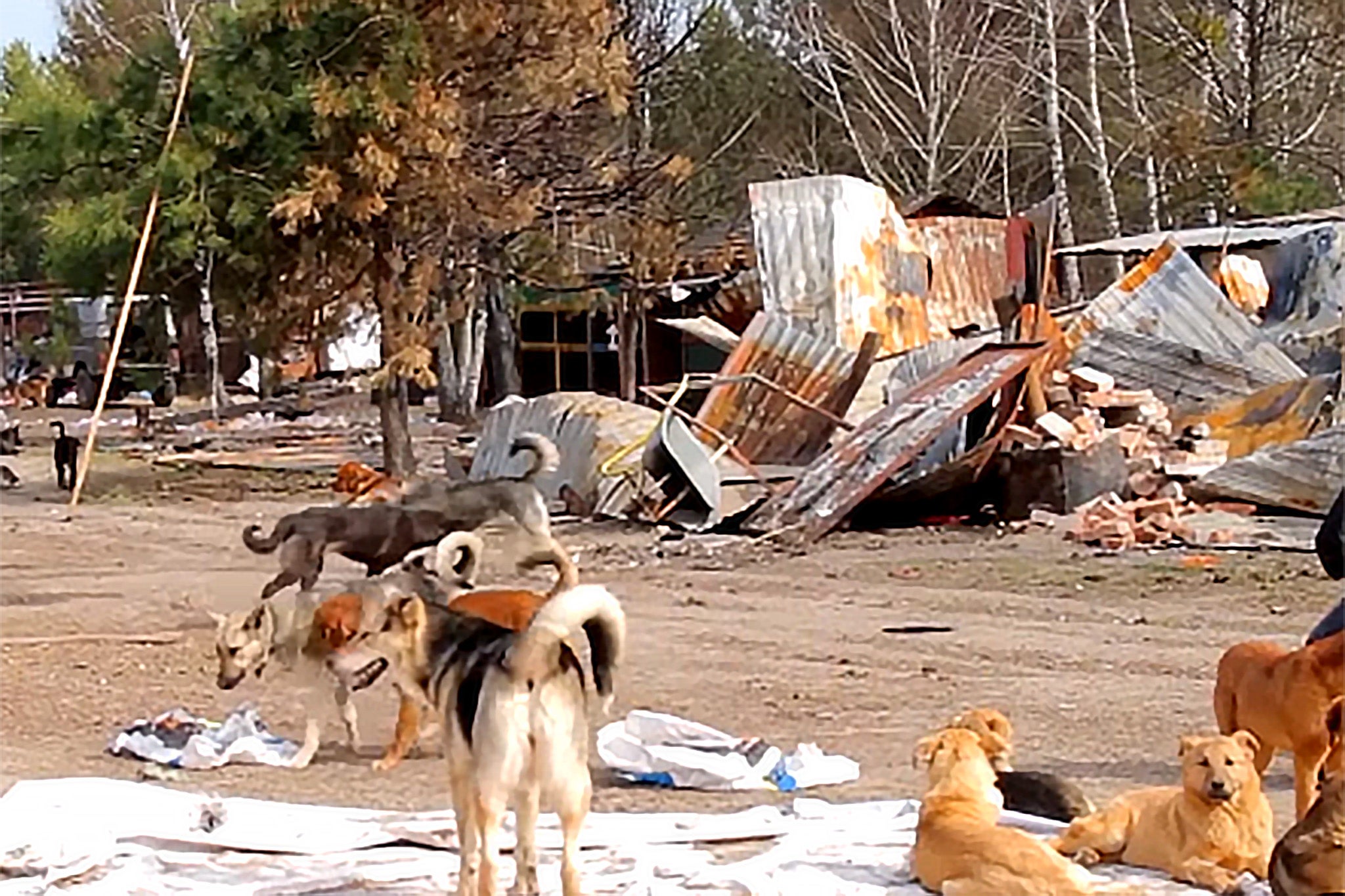
No animals were hurt that day but on 3 March the shelter was hit again. Ms Artkhovych says: “The second air raid blew away all the windows in our cat house, some cats died that day from a heart attack or were thrown away by the blast wave.”
A row of kennels home to all of the puppies at the shelter went up in flames. “Unfortunately they have all died. There were about 68 of them,” Ms Artkhovych says.
The attacks continued throughout the month until almost all of the shelter’s kennels and enclosures had been damaged or destroyed.
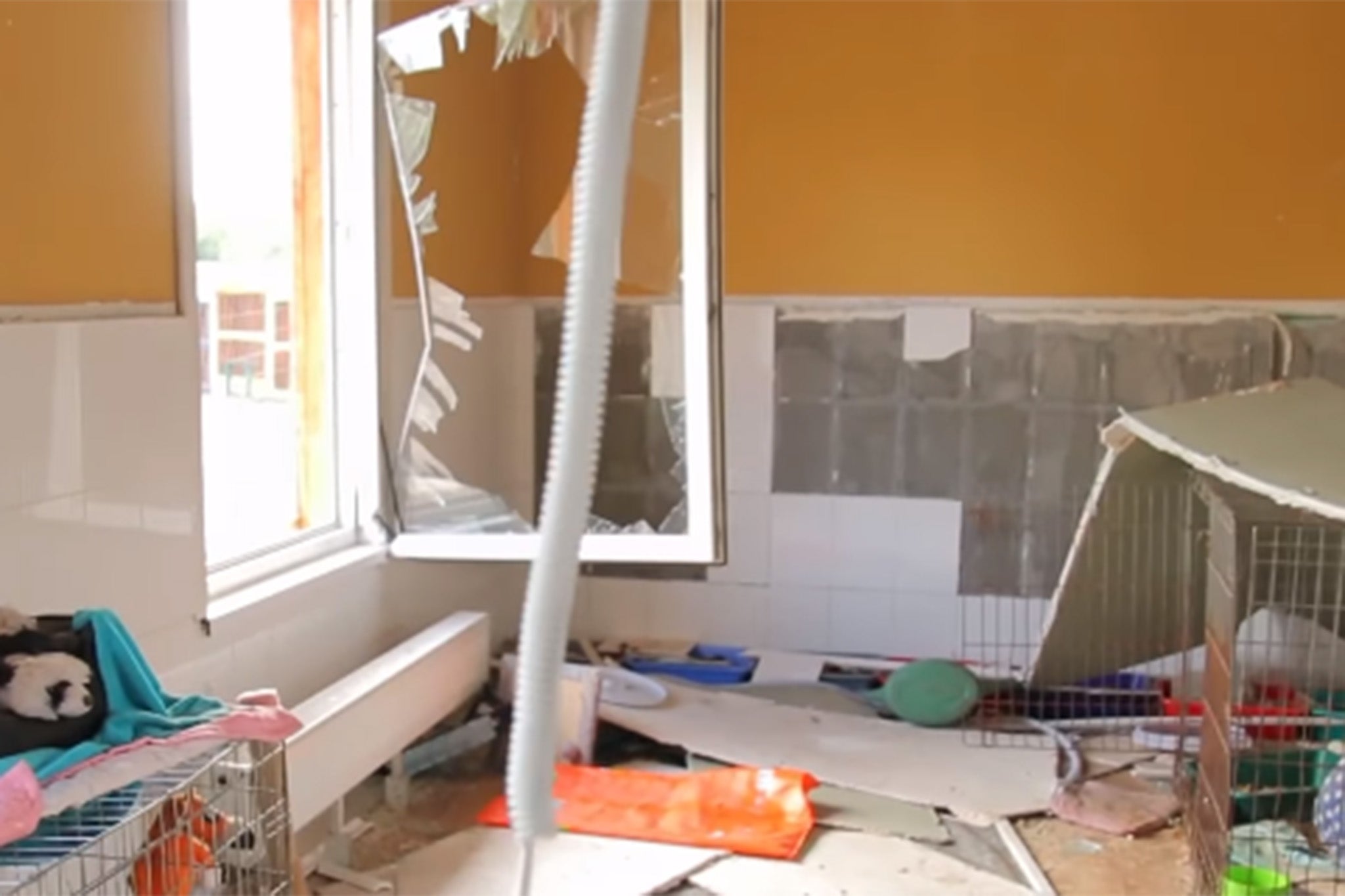
Ms Artkovych said there were five attacks in total – a mixture of air and artillery strikes – killing around 260 cats, around 100 dogs and a goat.
The shelter managers said that after the second attack they released all of the animals from their enclosures so they would not be trapped if hit again. They did not clear the corpses for a month due to fears of further attacks.
Many of the surviving animals left the shelter and headed into the surrounding woods and villages, while hundreds of cats and dogs were sent to safety in Poland.
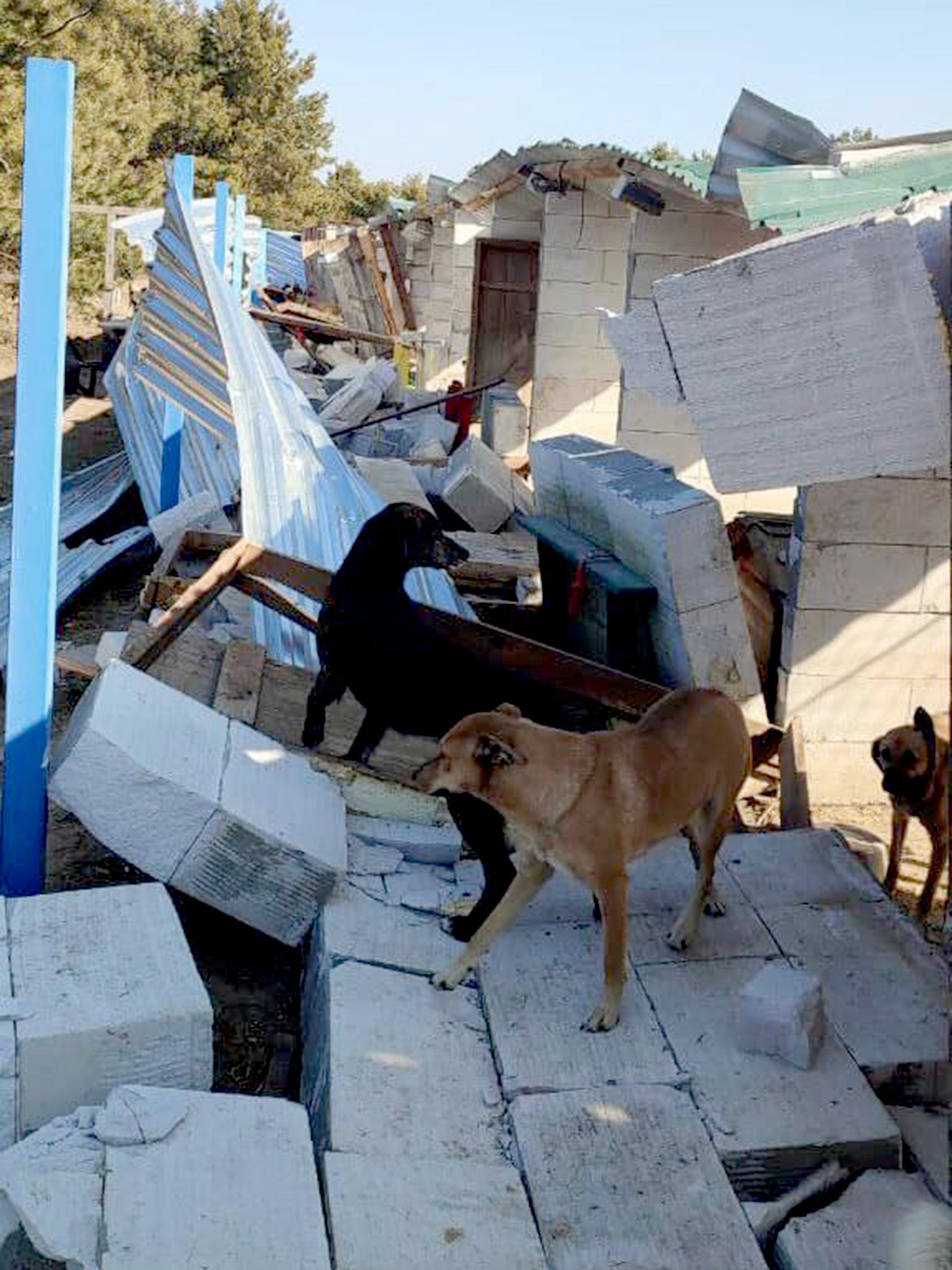
In a Facebook post on 18 March, one day after the fourth attack, shelter manager Christina Safaryan wrote: “Enemies killed me every time they dropped bombs on the shelter. It hurts a lot... They killed my dream of having the best animal shelter.”
The Independent was not able to verify claims that Russia was behind the attacks.
Shelter managers and others who visited the site since the attacks provided photos of what they said were remnants of Russian missiles but weapons experts said it was not possible to tell whether the objects in the photos were explosives, nor if they were of Russian origin.
Anatolli Shara, an engineer who visited the site in April, said 120mm mortar shells were found at the shelter.
The volunteers have struggled to understand why Russia would target an animal shelter hidden in the woods miles from the nearest town.
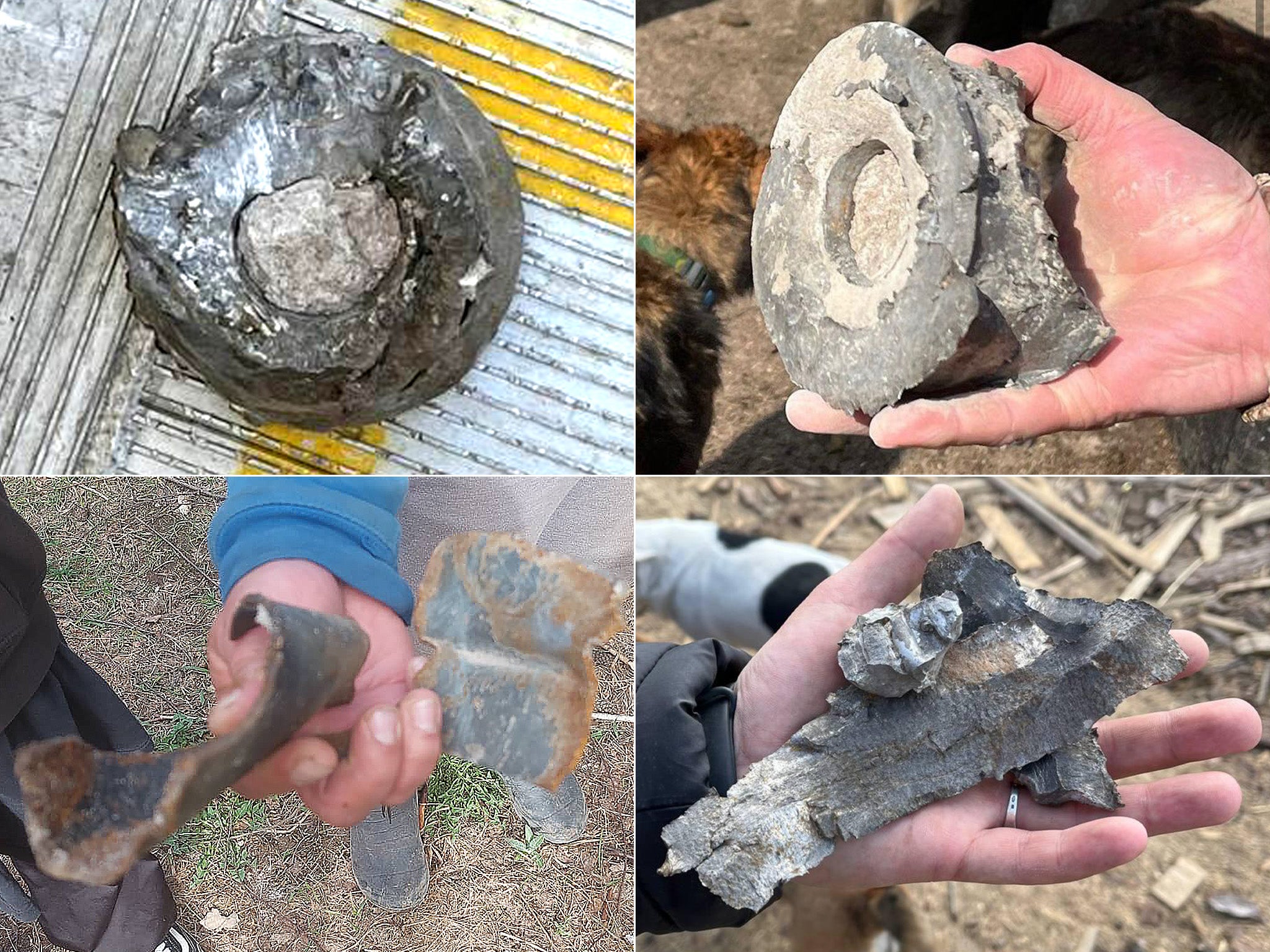
Ms Artykhovych says she suspected Russian forces saw satellite images of the shelter and presumed it was a factory or military base – sites that could harm the Ukrainian defence if destroyed.
Russian troops were reported in Makariv, around eight miles north of the shelter, on the day of the first attack as part of efforts to secure the main routes into Kyiv. That same day the Ukrainian army pushed the Russians out of Makariv and into the surrounding countryside.
Every personThe Independent spoke to for this article reported Russian attacks on the villages near the Best Friends shelter, including Fasova, a mile or so away.
Live UA Map, a monitoring site that records military movements, reported Russian military activity in the area south of Makariv for most days of March.

Best Friends was not the only animal shelter to suffer in the invasion. Around 30 miles north in Borodyanka, more than 300 dogs were reportedly found dead at an animal shelter in April after being left in their cages from 24 February, the day of the invasion, as volunteers fled the Russian assault.
The Best Friends shelter has been under repair. The managers have had some success gathering donations online with the help of Ukrainian animal charities.
Nastya Aboliesheva, a volunteer with the Happy Paw animal charity, says they are making progress. The withdrawal of Russian troops from the region has helped the reconstruction along.
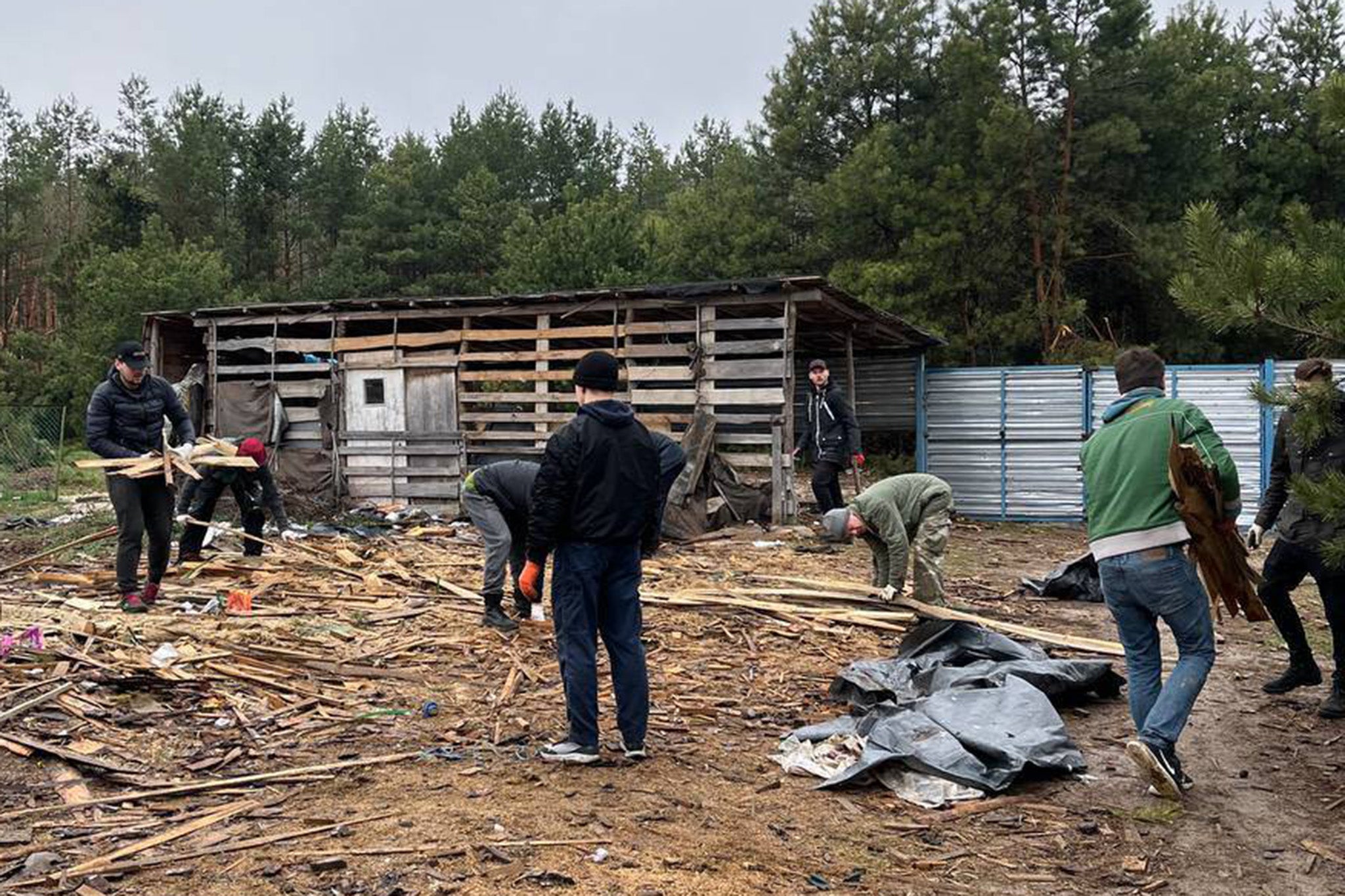
“At first, [the shelter and the charity] were cautious about the reconstruction process and were not sure that we would start work in the spring.
“After all, everyone was afraid that the occupying forces would return and there would be fighting and shelling again. Everyone was afraid that the money would be wasted and the shelter would be destroyed again,” she said.
“But we are all very quickly getting used to reducing the number of air alarms, to the “illusion” of safe – because now we do not see and almost do not hear the occupiers.”
The volunteers hope by the end of the month Best Friends will be able to offer sanctuary to hundreds of animals, just as it had for years before the war.






Join our commenting forum
Join thought-provoking conversations, follow other Independent readers and see their replies
Comments